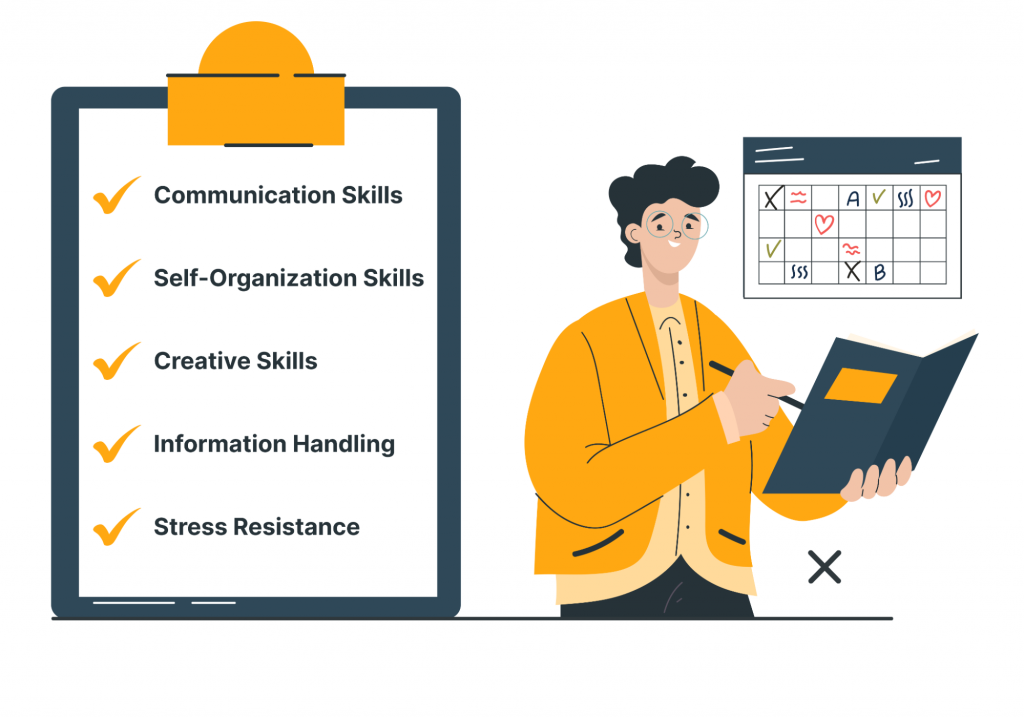With the gradual development of the Internet, the concept of distance has faded, and chatting with a person from the other side of the world has become a very real thing. With the spread of the “Internet boom,” different communities began to be created, and something called netiquette appeared with their growth. Let’s be honest. Not that everyone rigorously strived to follow it. Still, time made its adjustments when the Internet began to be used as a location for potential customers and a way of direct communication. And then we smoothly approached the questions – why communication is important for project manager and how it is right to work with a client in such conditions.
Related: Role of Project Manager in App Development Process
Top 3 Clients Types and How to Approach Them: Best Practices for Project Management Communication
A project Manager is a specialist whose main task is to manage the project as a whole: design and prioritization, task scheduling, control, communication, and immediate problem-solving. As you can see, one of the primary responsibilities is to be a connector between the client and the team, which needs strong soft skills.
Must-have soft skills for Project Managers

Suppose we’re talking about the daily routine and the introduction of the project. In that case, the processes are often already established, or the client comes with particular requests that need to be appropriately processed and followed. When all procedures are approved and take effect, and sometimes even before that, if you take part in the pre-sales processes, the manager needs to take the most crucial step – to set up communication with the client.
Communication skills are a must-have thing. As mentioned above – PM is the main connecting link between all team members. If, in the beginning, when the format of officialdom was stronger than ever, communication was regulated and required strict adherence, then the appearance of COVID-19 on the stage made its own changes. Frequent and long meetings in the office with a presentation from the client and specific requests were supplanted by daily calls, long brainstorms, and regular fixes, sometimes even several times a day. But we are getting ahead of ourselves.
“Each client is an individual first. They require their own unique approach. But despite this, you can try to group customers into three main classes – old school, family company, and start-up.”
Old-school clients have fairly clear personal boundaries, adhere to the rules, call agenda, time frames, and your direct duties. They won’t be rude to you and might even be happy to have a drink with you at some joint event. But it won’t affect your work on a Monday morning. Usually, all negotiations with such clients go pretty smoothly. But there is an excellent chance of missing the moment when something goes wrong for the client. They will not tell you about it because of the regulations.
Family. Such a client will be friendly with you, like an aunt who is present at all family holidays. She will listen to you and ask how you are doing. But like any aunt, she reserves the right to remain in her opinion. At some point, you can find yourself in a position where all your negotiating efforts have led you in the diametrically opposite direction.
A Start-up group is a perfect example of the stereotype that a start-up is an eternal party of a crowd of drunken youth with a lot of money, motivation, and support from cool and serious people and that working with them is just a trifle. Not all of this is a lie, but some of it is taken to the point of absurdity.

The main difficulty, if you can call it that, is the transience and adaptability of the product. So we’ve started discussing the creation of an application for parties. A week later, we are designing a site for finding a partner to attend lectures at a local college with a GPS navigator, filtering by music preferences and Mars in the third house. So it’s quite a regular practice when, after a long and fruitful call, you form a fantastic plan in your head, and in the morning, it all goes to waste because the start-up never sleeps.
What are Effective Ways for Project Managers to Communicate: a Few Tips From the Author
All this is, of course, lyrics, any attempts to bring people to a list, a checklist, or a clear set of rules is a rather stalemate idea simply. People are rather strange creatures, believe me. I have been living with myself for 30 years and still do not always understand what I am guided by. So whether you like it or not, each client will have to look for their own individual approach, not forgetting that many people think that you are a telepath and always understand everything. Here are some tips that I can give you based on my own experience.
- Watch your client, and be within the bounds of decency, as if we take as a constant that your client is from the old school. If during this conversation, small jokes, light chuckles, and some non-standard reactions will slip into ordinary things – remember, this will help you understand your client.
- Ask. It is better to ask/clarify 1000 times than to redo it 100 times. The ambiguity of words can lead to unexpected consequences because a banal answer with the word “Right” can mean both a confirmation of your idea and the placement of some element on the right on the layout.
- Take an interest in your client’s business. And again – they are people, and even the worst client’s day can be fixed by a question, “How are you doing?” This approach will give you a plus sign in a relationship.
- Suggest. Yes, this is a very tricky path – you can either be harnessed to this very idea or smashed to smithereens. Do not forget – you are a professional in your field, your client may be a beginner, and it’s trite not to know some common truths, but he will be ashamed to ask so as not to make himself look like an idiot.
- Do not forget the client is good, but you are the face and, most importantly, the protection of your team. In pursuit of client satisfaction, it is essential to remember that all that phantasmagoria that the client painted in front of you in an unrealistic time frame must be carried out by the team, and if clients come and go, then the team is with you for a long time.
The Difference in Communication with Clients: Real-Life Stories
“Remember, the work of a PM with a client is always interesting. Challenging? – Well, if only a little. Boring? – Never!”
So what is it all about? The first steps in getting to know the client and finding the right behavior takes time, some more, some less. Does this always mean that communication will be smooth and all sharp corners will be easily hidden? No.
I worked on the project for a year. After 10 months, I saw the client’s daughter in the camera and what a caring father he is, but I learned from my boss that something worried him and worried him quite a lot. Why? But because the client shared his thoughts with his colleague, who worked as an intermediary between the two companies. Was this my fault? The issue was resolved quickly and relatively painlessly, and we checked retrospectively on this situation. To my question, “Did I do something wrong?” he answered that no, he just wanted, first of all, to reveal it to his friend. He worked with him for many years and only then took it off with me. He was so used to it, and the fact that I saw his daughter, and sometimes I could ask about a vacation, did not show up in any way on our joint work.
In contrast to him, my other client. We found a common language from the first weeks, discussed features, improved processes within the project, and moved it forward. For each of our calls, we both take tea or coffee and set aside a couple of minutes to discuss our lives outside the project, which works.
Two cases, two similar levels of communication, but at the same time, such different processes and concepts of project management in the end. This does not mean that the approach is bad. Both clients are satisfied, each in their own way. But this means that you need to be flexible and feel what you can do and what you cannot. It takes time, proactivity, and patience – all the things that a project manager appreciates. So go ahead and give your work with a client some time.
Summary
Are you looking for a way to involve experienced and skilled professionals to your app development? Contact the IDAP sales team to speed up Time-to-Market and increase ROI at times.



